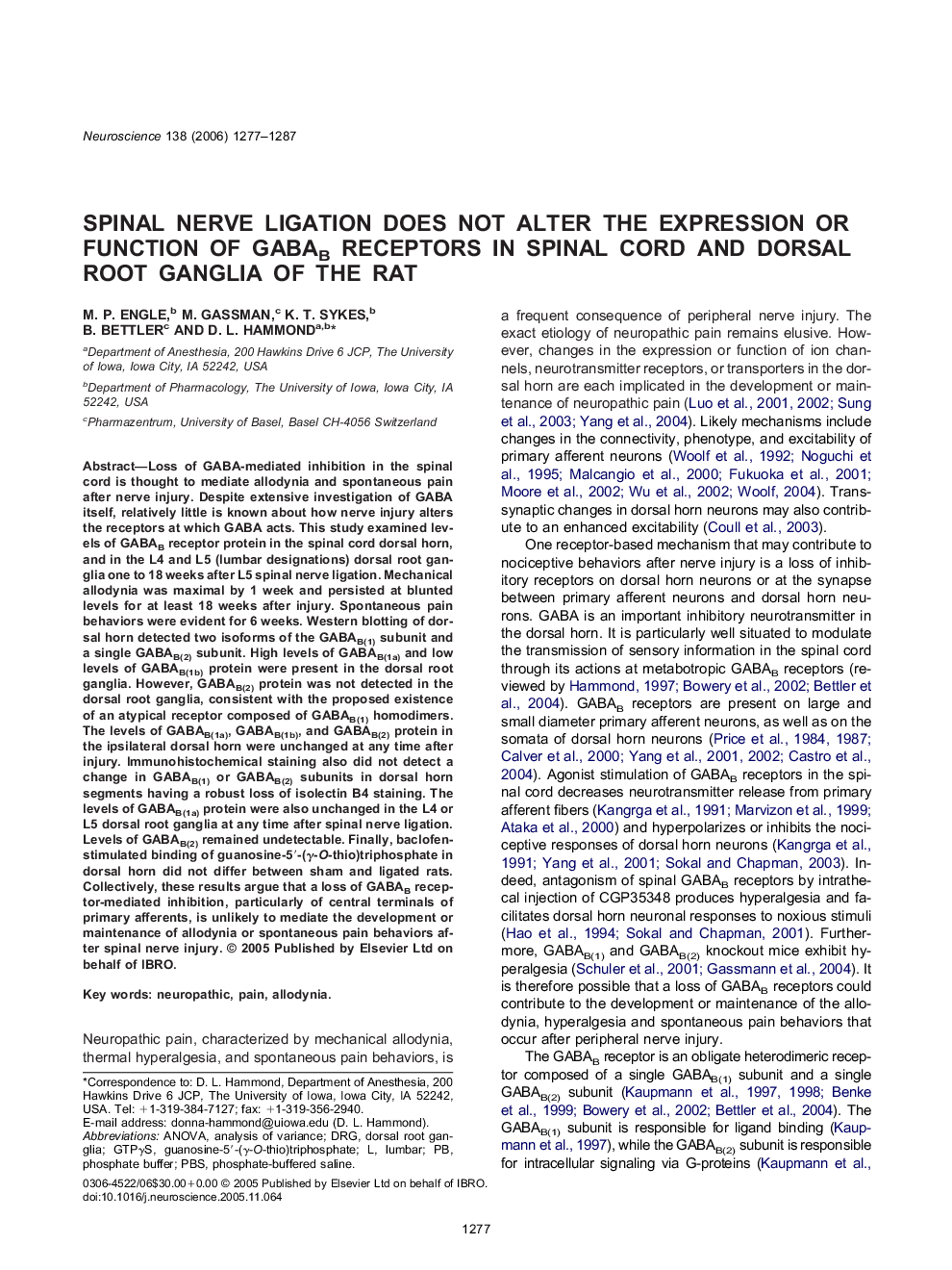| کد مقاله | کد نشریه | سال انتشار | مقاله انگلیسی | نسخه تمام متن |
|---|---|---|---|---|
| 4342698 | 1295884 | 2006 | 11 صفحه PDF | دانلود رایگان |
عنوان انگلیسی مقاله ISI
Spinal nerve ligation does not alter the expression or function of GABAB receptors in spinal cord and dorsal root ganglia of the rat
دانلود مقاله + سفارش ترجمه
دانلود مقاله ISI انگلیسی
رایگان برای ایرانیان
کلمات کلیدی
موضوعات مرتبط
علوم زیستی و بیوفناوری
علم عصب شناسی
علوم اعصاب (عمومی)
پیش نمایش صفحه اول مقاله

چکیده انگلیسی
Loss of GABA-mediated inhibition in the spinal cord is thought to mediate allodynia and spontaneous pain after nerve injury. Despite extensive investigation of GABA itself, relatively little is known about how nerve injury alters the receptors at which GABA acts. This study examined levels of GABAB receptor protein in the spinal cord dorsal horn, and in the L4 and L5 (lumbar designations) dorsal root ganglia one to 18 weeks after L5 spinal nerve ligation. Mechanical allodynia was maximal by 1 week and persisted at blunted levels for at least 18 weeks after injury. Spontaneous pain behaviors were evident for 6 weeks. Western blotting of dorsal horn detected two isoforms of the GABAB(1) subunit and a single GABAB(2) subunit. High levels of GABAB(1a) and low levels of GABAB(1b) protein were present in the dorsal root ganglia. However, GABAB(2) protein was not detected in the dorsal root ganglia, consistent with the proposed existence of an atypical receptor composed of GABAB(1) homodimers. The levels of GABAB(1a), GABAB(1b), and GABAB(2) protein in the ipsilateral dorsal horn were unchanged at any time after injury. Immunohistochemical staining also did not detect a change in GABAB(1) or GABAB(2) subunits in dorsal horn segments having a robust loss of isolectin B4 staining. The levels of GABAB(1a) protein were also unchanged in the L4 or L5 dorsal root ganglia at any time after spinal nerve ligation. Levels of GABAB(2) remained undetectable. Finally, baclofen-stimulated binding of guanosine-5â²-(γ-O-thio)triphosphate in dorsal horn did not differ between sham and ligated rats. Collectively, these results argue that a loss of GABAB receptor-mediated inhibition, particularly of central terminals of primary afferents, is unlikely to mediate the development or maintenance of allodynia or spontaneous pain behaviors after spinal nerve injury.
ناشر
Database: Elsevier - ScienceDirect (ساینس دایرکت)
Journal: Neuroscience - Volume 138, Issue 4, 2006, Pages 1277-1287
Journal: Neuroscience - Volume 138, Issue 4, 2006, Pages 1277-1287
نویسندگان
M.P. Engle, M. Gassman, K.T. Sykes, B. Bettler, D.L. Hammond,